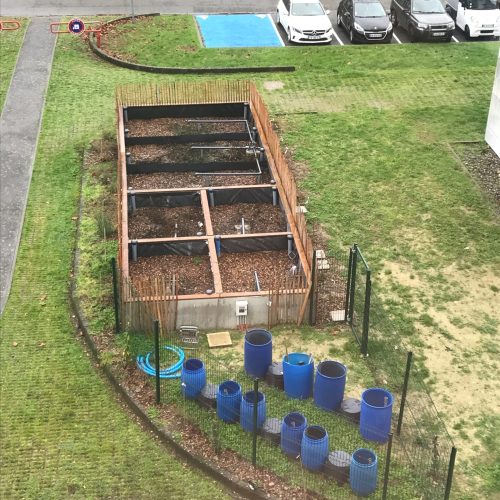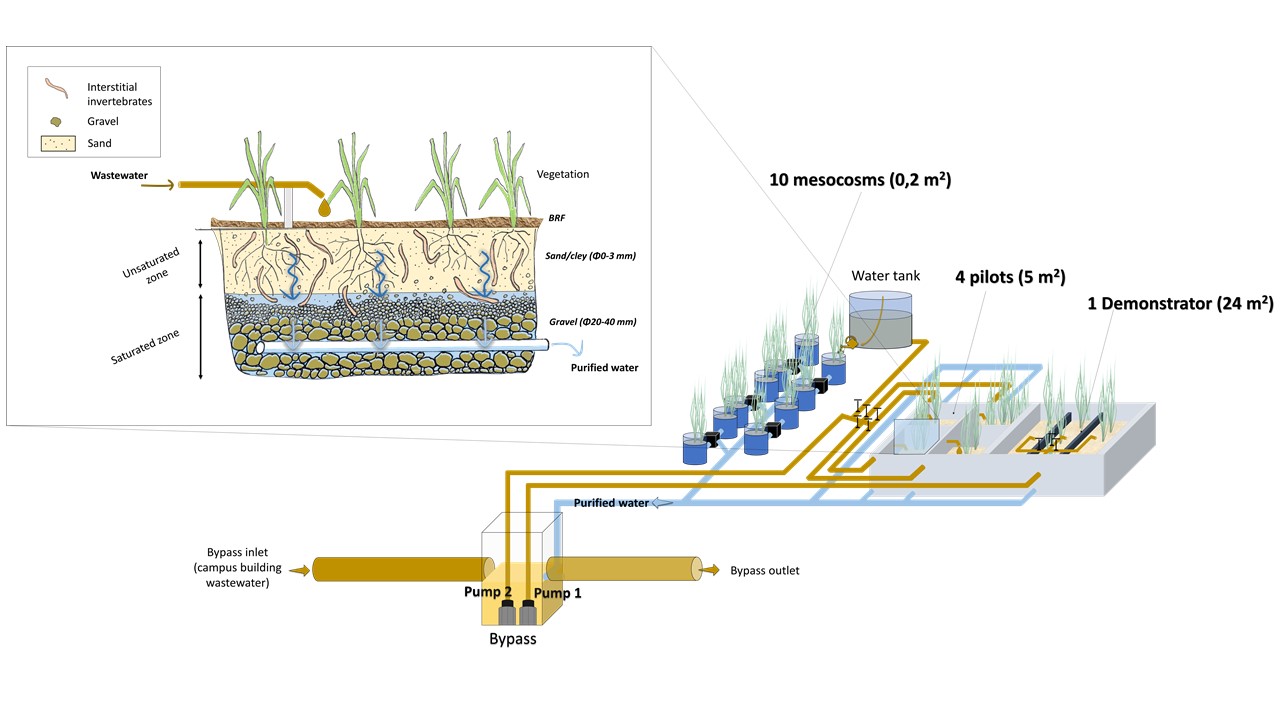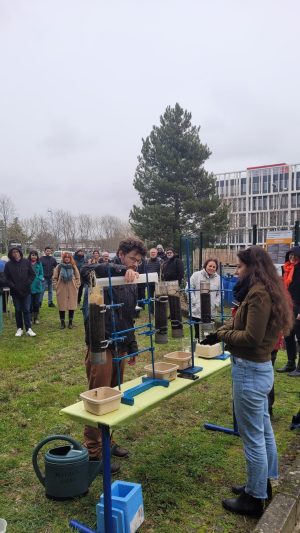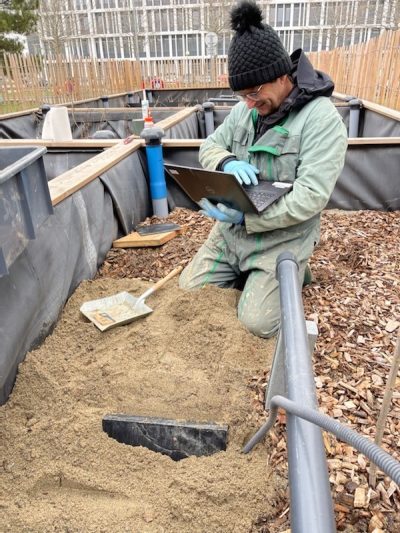Why constructed wetlands for a smart campus ?
Constructed wetlands (CW) are often used as a natural solution for water purification around the world. On campus, they are solutions for various water saving purposes after water filtration. In most cases, on South European campuses, where water security is under pressure, these solutions pave the way for water recycling.
The water produced by the CW comes from the wastewater of the domestic, teaching or administrative buildings, so the resource is constant over time and local. The released treated water can be be a valuable resource for watering green spaces or filling water fountains for the quality of life in the campus landscape. In addition to the economic benefits, this nature based solution also provides low energy demand treatment co-benefits compared to traditional water treatment (with fixed biomass, membranes, etc.). The water treatment does not require energy, as it is provided by natural biofilm living in the soil column.
Moreover, CWs can be applied locally and do not require long water network, hence the possibility of gravity feeding, which is suitable for energy recovery from pumping systems. The design of CW as bioinspired vertical filters is particularly effective for managing and minimizing micropollutant as suspended mater. This type of infrastructure on campus therefore works at saving domestic water as well as runoff and it may be included in the circular strategy of the university. These CWs are also biodiversity carriers for insects, birds, amphibians and may contribute to enrich the natural aspect of the campus and flowers around the buildings. At the same time, they lower the temperature by creating a cool island in the middle of the building area. So, with so many benefits, why aren’t these filters included in campuses and cities more often?
An survey of campuses users at the University of Toulouse III – Paul Sabatier raised some concerns about these filters. The main confusion comes from the fact that people believe that the CWs will accumulate water as a reservoir that could increase the mosquito population. Howerver, there is no standing water on the surface of the soil, so aquatic fauna cannot colonize the infrastructure. Another fear comes from the possibility of the users (students) falling into the same overlying water body, which does not come out. One more common thought is the smell, that could be a source of discomfort for the neighborhood. While the anaerobic degradation of organic matter provided in the wastewater can be a source of sulfide formation in regular sewer, conversely, an integrated aerobic/anaerobic CW, also called a hybrid filter, combines a mixed metabolism that usually works for the H2S prevention.

When all these preliminary resistances are overcome, there can be the beginning of a filter platform. In the neOCampus filter platform of the Université Toulouse III – Paul Sabatier, there is a set of experimental filters with a large 24m² demonstrator, 4 pilots as replicates to test different research conditions, and 10 mesocosms. With smaller mesocosm size, it is possible to get a larger number of replicates to test statistically correct hypotheses.
Such filters treat domestic water, and here, the platform collects wastewater from a teaching building that is equivalent to a building with 30 occupants.
One of the main research topics of the UMR LEFE 5 (laboratoire d’Ecologie Fonctionnelle et Environnement), is to demonstrate that the performance of the filters can be improved with a new biodiversity introduced in the filter soil, other than the regular biofilm micro-organism and plants.
There is a bunch of environmental sensors that will allow us to record and understand the internal functioning of the CW with a connexion to neOCampus LoRaWAN network, like a smart garden. In this way, the e-sensors are useful as research data providers to improve the water treatment efficiency. One of the main challenges of this research is to reduce the surface footprint of the CWs in order to allow them to better adapt to the urban areas where space is limited. Why is this type of demonstrators a good example for campus Living Labs ?
Toward a demand for numeric, social, energetic and ecological transition, there are several ways to address the development of LL. The solutions adopted to solve the problems are generally more numerous, as 100% technological solutions with digitalization being the starting point of the demonstration. CW is interesting to develop as a support for research in LL because it provides an example of capacity building based on an alternative nature-based solution that is different from the 100 % technology and digital tools. With this implementation of a “green – grey” platform, we investigate the area of the possible combination of an improved green solution with a digital tool.
From our point of view, there is the main challenge of the future LL that should address sustainability issues for climate change mitigation, and adaptation with multidisciplinary approaches, including environmental sciences, IoT, civil engineering, architects, etc. Biomimicry is a source of inspiration for innovative and interdisciplinary research that certainly combines economic as well as sustainability purposes, with the added benefit of great commercial opportunities, and campuses are perfect places to make this demonstration.
Here is a first attempt at a bioinspired Living Lab !



